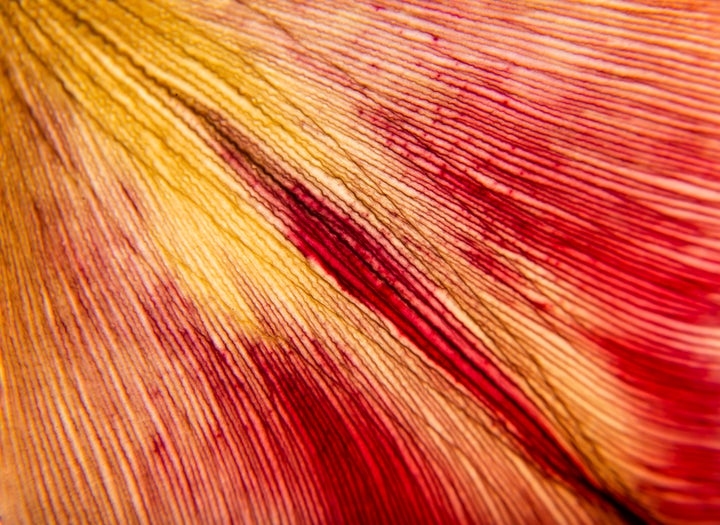
What even is normal? One thing for definite is everyone with one wonders if their vagina is normal. But many of us would rather Google it than actually talk to a friend or a doctor. A survey by the gynaecological cancer charity, The Eve Appeal, found that a third of women in Britain have avoided going to the doctors with gynaecological issues due to embarrassment. To start with, we need to be more comfortable talking about them so which is one of the reasons why I’ve founded the Vagina Museum. The aim is to create a bricks and mortar space dedicated to all things vaginas and gynae. And on 14 September we’ll be taking a pop-up version of the Vagina Museum to the British Science Festival in Hull.
Before we get stuck in, let’s get something straight. There’s a difference between “normal” which here I’m defining as healthy, and “normal by society’s standards”. Society tells us all sorts of rubbish - your thighs shouldn’t touch, your lips should be thick, your collarbones should poke out your skin. Let’s forget certain cultural expectations for a moment (wouldn’t it be nice if we could forget them all together?) and focus on health.
Myth 1: You shouldn’t have any discharge
Did you see the #pantychallenge trend? People on Twitter shared photos of their clean knickers at the end of the day to prove that they had no discharge. What tosh. Discharge is from the fluid inside your vagina and it’s what keeps it clean and healthy. As long as it isn’t extremely pungent or green or yellow, you’re good.
Myth 2: You inner lips should stay hidden
Us people with vulvas rarely see other vulvas - especially if you’re a heterosexual woman. If you’re going to see one, it’s probably in porn and most porn actors have very small inner labia - but that’s because it’s a fashion. This is not representative of the true range of labia looks out there. There are some that are small and some that are huge and flap in the wind carefree. You can have a look at the amazing Labia Library to see photos of the true range of vulvas out there. Pretty soon, you’ll see that there is no reason why your inner lips shouldn’t be poking out. If you have a sexual partner looking down there, I promise you they won’t even notice the size of your labia, they’re just so excited you are letting them have access to your fun-time parts (and if they do notice and don’t like it, dump them immediately, you don’t need that negativity in your life). For a really, really, really small percentage of people - and I can’t stress enough how rare this is - their inner labia are so large it can cause physical discomfort, and if you think that’s happening to you, speak to your GP about your options.
Myth 3: Everyone’s insides look the same
The vagina leads to the cervix, which opens up into a uterus, which has two tubes coming out of it that end in ovaries? Right? Not always. About 1-2% of the population are intersex, which means they don’t fit into the two boxes that say you can only either be a person with this kind of gynaecological anatomy and XX chromosomes or this type or person with a penis and XY chromosomes. There are people who are born with two uteruses, no uterus at all, there are people with XY chromosomes and a uterus (e.g. in Swyer Syndrome). There are at least 30 different types of recognised intersex conditions. 1-2% of the population doesn’t sound like much, but that’s the same proportion of people who have red hair. And we don’t say there’s only two types of hair colour, brown and blonde, and red is the exception. So intersex isn’t an exception either, it’s just another way to have a body.
Myth 4: Your first time having vaginal penetrative sex will be painful
Sorry to break it to you, but virginity is a social construct. There is literally no physical difference between having sex for the first time or the hundredth time. Hymens don’t break, you don’t have to bleed and your vagina doesn’t get any looser (if we can push entire babies through it we can handle your tiny penis). Pain or bleeding during sex, any time not just the first time, is not something that should be happening. Bleeding after sex is often due to not being aroused enough. Losing your virginity can be nerve-wracking! But bleeding can also be due to an infection, cervical erosion, and sometimes cancer. Pain in the vagina or vulva during sex could be due to not being aroused enough, not enough lubrication, irritation from latex, FGM, vulvodynia or vaginismus. (This is non-consensual pain of course, if you asked for the pain, good for you, live your best life, have a good safe word).
Myth 5: Bad period pain is a part of life
Why do we get period pains? The uterus is always doing little contractions but you normally can’t feel them. When your period starts and it wants to get rid of the uterine lining, it contracts more vigorously. This compresses the blood vessels, which leads to lower oxygen supply which causes the uterus to release pain-triggering chemicals. It’s basically womb angina. The class of chemical that produces contractions, prostaglandins, is also involved in pain so it’s a double whammy. Low levels of period pain is totally normal. If it is very severe, it may be a sign of endometriosis, adenomyosis, fibroids or PID. Go to your doctor to find out what your options are. And if they don’t believe you when you say it’s unbearably bad, find a new doctor that does believe you.
Florence Schechter is the founder of the Vagina Museum, and appearing at the British Science Festival, which runs in Hull from 11-14 September